U.S. Congress Approves Theater Tax Benefit
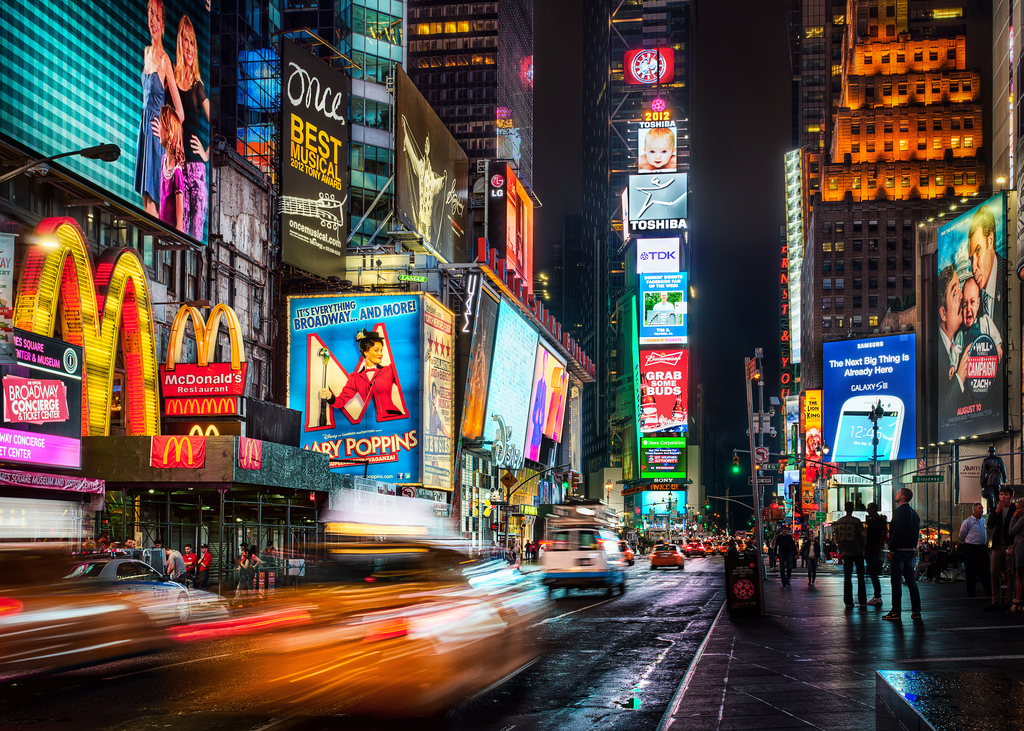
The U.S. Congress approved a tax law change that would incentivise investment in live theater, much the same way film and TV industries benefit from tax tax benefits.
“The tax law change, part of a bill that President Obama is expected to sign, would provide an incentive for investors in live theatrical productions by accelerating deductions and by ending the practice of requiring them to pay income tax on what producers call ‘phantom profits,’ which is money returned to investors that is less than the amount they had initially invested,” Michael Paulson reported for The New York Times. “Investment in theater is highly risky — most Broadway shows fail financially — so the industry wants to make it as attractive as possible.”
Supporters of the incentive hope that more plays are produced in the U.S. because of the change.
“We’re having incredible seasons these days, but it’s not always going to be that way, and I want to keep jobs in New York and, if not, certainly in the U.S.,” Charlotte St. Martin, president of the Broadway League, told the Times. “This will open the pipeline for more productions—it’s money producers can put into other shows.”
(photo credit: Justin in SD via photopin cc)
News You May Have Missed
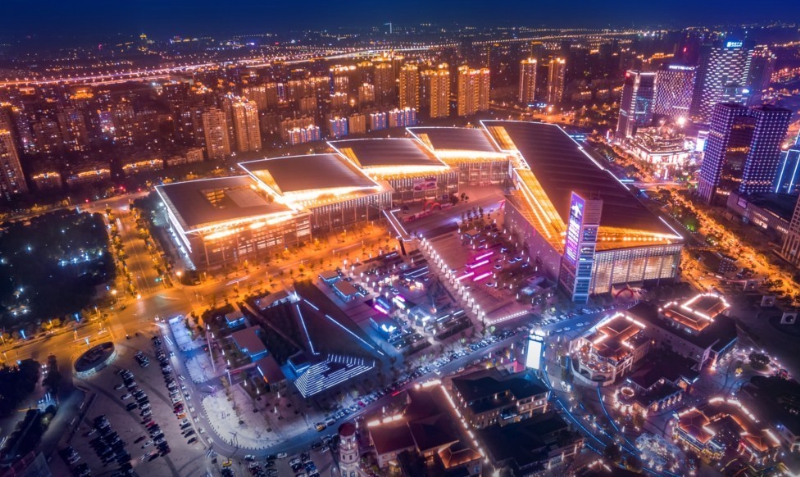
These are selected news articles that showed up in our inboxes on Monday morning that we want to pass along to you.
Suzhou International Expo Center to Build a Modern Expo Complex in China (PR Newswire)
“Its third phase of construction, which includes Suzhou Jinji Lake International Conference Center and Novotel Suzhou SIP, will be fully completed in March 2016.”
Trade Center’s Bob Coffey to Retire (BusinessInSavannah.com)
“A 36-year veteran of the hospitality industry, Coffey has been at the [Savannah International Trade & Convention Center] on Hutchinson Island since 2002.”
Olympia Unveils First 2 New Red Wings Arena Sponsors (Crain’s Detroit Business)
“Meijer Inc. and St. Joseph Mercy Health System are the first two major sponsors at the new Detroit Red Wings hockey arena.”
Michigan Governor Snyder Signs Bills Allowing Stadiums, Amusement Parks to Stock EpiPens (Wilx.com)
“Employees will be trained to administer them and will be allowed to use them when necessary.”
Stage Set for New Joondalup Performing Arts Centre (Communitynews.com.au)
“A feasibility study in 2012 reinforced there was a significant under-provision of these facilities in Perth’s northern corridor and a report in 2013 indicated there was a shortage of performing arts venues in Perth and a growing demand for suitable facilities.”
Sacramento Kings and Comcast Agree to Partnership
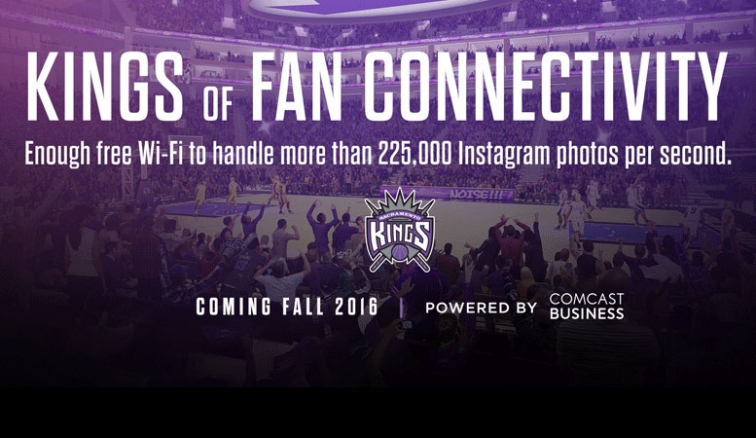
The Sacramento Kings plan to make Golden 1 Center the world’s most connected arena by agreeing to a multi-year partnership with Comcast Corp.
“The best fans in the world deserve the most connected arena in the world,” said Kings President Chris Granger in a statement. “Our partnership with Comcast enables fans and visitors to share their experiences and connect online seamlessly. It also ensures that Golden 1 Center, the public plaza, and DOCO’s connectivity will remain well above industry standards, even as consumer technology improves.”
According to the Kings’ press release, Comcast will install two, 100-gigabit Ethernet dedicated Internet circuits.
“The services will provide the back-end infrastructure enabling the team to provide free Wi-Fi for fans, power the Kings mobile app, and supply cloud-based voice and unified communications services for team members at the arena and at the team’s corporate offices,” the press release said. “As a result, the Internet connection at Golden 1 Center, as well as the public plaza and Downtown Commons (DOCO), will be over 17,000 times faster than the average home Internet connection, with the ability to handle more than 225,000 Instagram photo posts per second.”
Comcast Business will also provide the in-house video to TV monitors in the arena.
“We’re pleased to extend Comcast’s ever-evolving partnership with the Sacramento Kings and honored that Comcast Business will allow the fervent fans at Golden 1 Center to experience a live event in innovative and exciting ways, from ubiquitous Wi-Fi to advanced mobile applications and rich video content,” said Comcast’s Regional Vice President of Business Services for California Ted Girdner in a statement. “This agreement is representative of how Comcast can deliver reliable, high-capacity Internet connectivity for fans, media, and arena team members while supporting various multimedia initiatives by deploying our full suite of consumer and business products.”
(Image: Sacramento Kings)
PAMC 2016 Keynote Speaker Announced
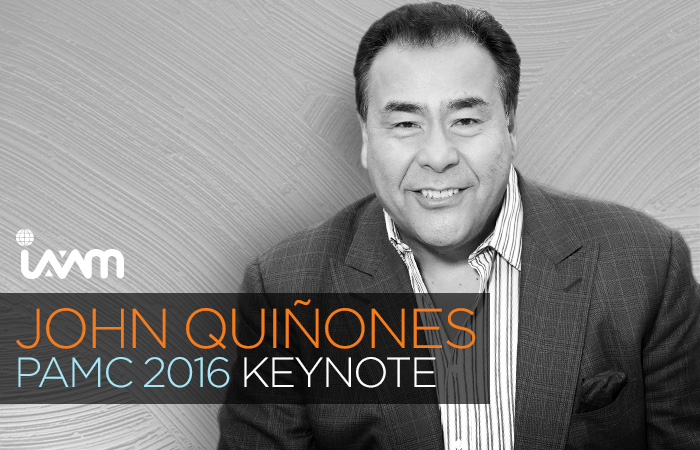
We are pleased to announce that John Quiñones will be our keynote speaker at the 2016 Performing Arts Managers Conference (PAMC) in San Antonio, Texas, March 7-9.
Quiñones has won seven national Emmy Awards for his Primetime Live, Burning Questions, and 20/20 work. He was awarded an Emmy for his coverage of the Congo’s virgin rainforest, which also won the Ark Trust Wildlife Award, and in 1990 he received an Emmy for Window in the Past, a look at the Yanomamo Indians. He received a National Emmy Award for his work on the ABC documentary Burning Questions—The Poisoning of America, which aired in September 1988 and was also honored with a World Hunger Media Award and a Citation from the Robert F. Kennedy Journalism Awards for To Save the Children, his 1990 report on the homeless children of Bogota. Among his other prestigious awards are the First Prize in International Reporting and the Robert F. Kennedy Prize for his piece on Modern Slavery — Children Sugar Cane Cutters in the Dominican Republic.
Registration is currently open for PAMC. See you in San Antonio!
Dallas Mavericks Expand Virtual Ticketing Partnership
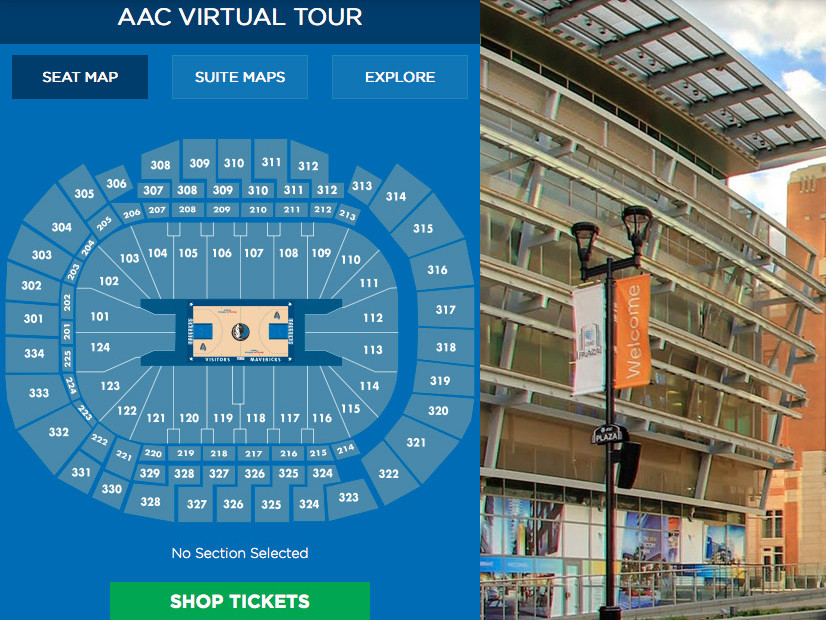
The Dallas Mavericks are continuing a partnership for three years it started in January 2015 with Tixsee, a virtual ticket-buying company.
“We aren’t in the business of selling tickets, we are in the business of selling unique and shared experiences,” said Mark Cuban, Dallas Mavericks owner, in a statement. “Tixsee’s product elevates ticketing technology, and further reinforces our commitment to creating memorable and entertaining experiences for our fans.”
The Mavericks are the first professional sports team to use Tixsee’s platform, which offers 360-degree panoramic virtual tours through Google Street View. The tour of the American Airlines Center features 12,444 high-res, panoramic photos stitched together to create 1,037 360-degree images. In short, click on a section in the arena and see what your view will look like before buying a ticket. You can experience it for yourself at mavs.com/tour.
“When we launched Tixsee, it was our goal to partner with the Mavs first because of their emphasis on both fan experiences, and technological innovation,” Tixsee co-founder and CEO Brett Dowling said in a statement. “The Mavs partnership has been vital to our growth. In addition, we are planning further developments including mobile apps to extend beyond ticketing.”
Do you want to receive a Front Row News weekly digest?
Categories
- Allied (861)
- Architecture (147)
- Arenas (747)
- Career (897)
- Convention Centers (895)
- Education (623)
- Events (1,544)
- Food & Beverage (193)
- Foundation (113)
- Guest Experience (1,496)
- Industry News (2,270)
- Leadership (1,888)
- Marketing (150)
- Membership (2,000)
- Music (213)
- Performing Arts Centers (454)
- Professional Development (409)
- Research (127)
- Safety & Security (442)
- Sports (763)
- Stadiums (608)
- Student (159)
- Technology (516)
- Ticketing (92)
- Touring (82)
- Trends (364)
- Uncategorized (743)
- Universities (218)
- Video (25)
- Young Professional (198)
Twitter Feed
- Twitter feed loading
Recent Posts
- Venuworks and ATG Entertainment Selected to Manage Fresno Convention and Entertainment Center
- Seattle Convention Center Announces Strategic Leadership Appointment and Growth Initiatives for 2026
- Peggy Daidakis Humbly Made Convention Center History
- Welcome to Our Newest Members
- New Member Benefit! IAVM Partners with Advantage Training to Elevate Staff Readiness and Guest Experience
Categories
- Allied
- Architecture
- Arenas
- Career
- Convention Centers
- Education
- Events
- Food & Beverage
- Foundation
- Guest Experience
- Industry News
- Leadership
- Marketing
- Membership
- Music
- Performing Arts Centers
- Professional Development
- Research
- Safety & Security
- Sports
- Stadiums
- Student
- Technology
- Ticketing
- Touring
- Trends
- Uncategorized
- Universities
- Video
- Young Professional
Archives
- December 2025
- November 2025
- October 2025
- September 2025
- August 2025
- July 2025
- June 2025
- May 2025
- April 2025
- March 2025
- February 2025
- January 2025
- December 2024
- November 2024
- October 2024
- September 2024
- August 2024
- July 2024
- June 2024
- May 2024
- April 2024
- March 2024
- February 2024
- January 2024
- December 2023
- November 2023
- October 2023
- September 2023
- August 2023
- July 2023
- June 2023
- May 2023
- April 2023
- March 2023
- February 2023
- January 2023
- December 2022
- November 2022
- October 2022
- September 2022
- August 2022
- July 2022
- June 2022
- May 2022
- April 2022
- March 2022
- February 2022
- January 2022
- December 2021
- November 2021
- October 2021
- September 2021
- August 2021
- July 2021
- June 2021
- May 2021
- April 2021
- March 2021
- February 2021
- January 2021
- December 2020
- November 2020
- October 2020
- September 2020
- August 2020
- July 2020
- June 2020
- May 2020
- April 2020
- March 2020
- February 2020
- January 2020
- December 2019
- November 2019
- October 2019
- September 2019
- August 2019
- July 2019
- June 2019
- May 2019
- April 2019
- March 2019
- February 2019
- January 2019
- December 2018
- November 2018
- October 2018
- September 2018
- August 2018
- July 2018
- June 2018
- May 2018
- April 2018
- March 2018
- February 2018
- January 2018
- December 2017
- November 2017
- October 2017
- September 2017
- August 2017
- July 2017
- June 2017
- May 2017
- April 2017
- March 2017
- February 2017
- January 2017
- December 2016
- November 2016
- October 2016
- September 2016
- August 2016
- July 2016
- June 2016
- May 2016
- April 2016
- March 2016
- February 2016
- January 2016
- December 2015
- November 2015
- October 2015
- September 2015
- August 2015
- July 2015
- June 2015
- May 2015
- April 2015
- March 2015
- February 2015
- January 2015
- December 2014
- November 2014
- October 2014
- September 2014
- August 2014
- July 2014
- June 2014
- May 2014
- April 2014
- March 2014
- February 2014
- January 2014
- December 2013
- November 2013
- October 2013
- September 2013
- August 2013
- July 2013
- June 2013
- May 2013
- April 2013
- March 2013
- February 2013
- January 2013
- May 2012
- March 2012
- December 2011
- November 2011
- October 2011
Recent Comments
- Frank Bradshaw, Ph.D., CVE on John Meyer, CVE, a Tireless Advocate of Certification for Venue Professionals, Has Died
- Neil Sulkes on Hilary Hartung, Friend to Many in Venue Marketing, Has Left Us
- Jason Parker, CVE on The Devastation of Hurricane Helene and How We Can Support One Another
- Larry Perkins on Touhey Testifies Against Speculative Ticketing Before Congressional Subcommittee
- Peter Secord on Major Players for Planned Elkhart Amphitheater Were in the Mix at VenueConnect
